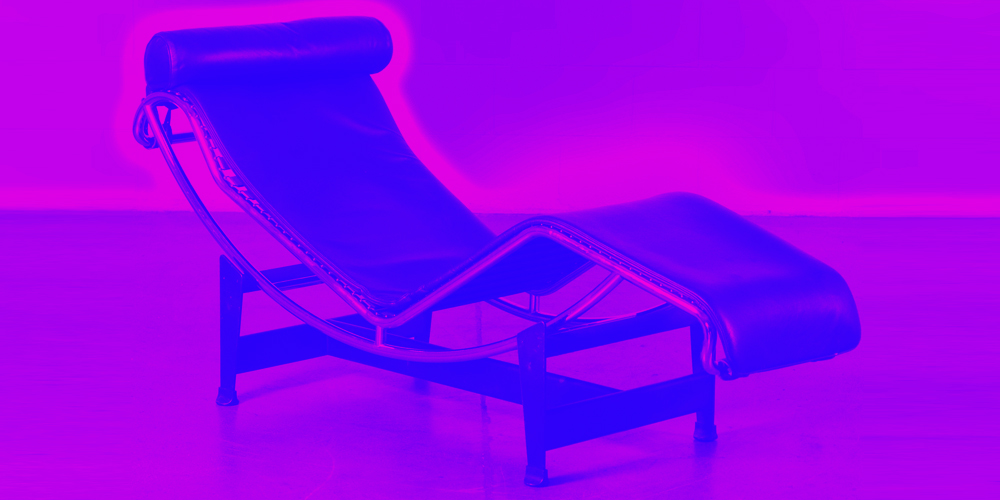
Comfortable, enveloping, and elegant: the LC4 is a Design Icon with timeless appeal.
A century after its creation, this “true resting machine” is still beloved and universally regarded as the quintessential chaise longue.
The history of our icon is long and winding: its first appearance dates back to the late 1920s.
Le Corbusier and his two partners, Pierre Jeanneret and Charlotte Perriand, were designing the interiors of a villa near Paris, Villa Church. For this villa, they created a series of tubular metal furniture models with a pure rationalist influence, and among them was the ancestor of what would become the famous LC4.

Charlotte Perriand was a strong supporter of this project; she wanted to transform the use of metal – which was then confined to sterile and cold environments like hospitals and offices – and bring it into the warm setting of the home.
She was not alone in recognizing the potential of this material: even Thonet, historically associated with bent wood, embraced this new expressive form after the war.
In 1929, it was Thonet Frères (the French branch of Thonet) that took on the challenge of producing the series of tubular metal furniture designed by Le Corbusier, Jeanneret, and Perriand for the Salon d’Automne, a series also known as “Equipement intérieur de l’habitation”.
The following year, large-scale production of the chaise longue officially began under the name B306.

Perhaps the time was not yet ripe: this highly modern seat was met with lukewarm reception. It seems that Le Corbusier may have imprudently granted licenses to various manufacturers across Europe.
This led to an uncontrolled proliferation of versions of the B306 (both authorized and unauthorized). To complicate the history of the B306 even further, the owner of Thonet Frères, the Jewish Leopold Pilzer, fled to the United States.
After World War II, the prospects for the B306 seemed to brighten: Pilzer transferred the rights to the chaise longue to a Swiss company, which in turn, in 1964, sold them to Cassina.
It was the Italian giant that cemented its success, making it one of its flagship pieces.
The LC4 is made up of two parts: a black-painted steel pedestal on which rests a movable cradle in chrome-plated steel. The cradle rocks due to its curved shape, adjusting to the body’s angle of inclination. Its stability is provided by the friction from rubber tubes covering the crossbars of the pedestal. The mattress and headrest are made of leather.
To this day, only Cassina holds the exclusive worldwide licensing rights, signed in 1964 by the three designers and the Le Corbusier Foundation.
Fortunately, it is fairly easy to recognize original pieces as they are numbered and signed.
The LC4 is undoubtedly one of the greatest achievements of the rationalist movement, a perfect synthesis of function and form.
Refined and harmonious, with its sleek and inviting curves, it can give any space an aura of sensuality and class.
A universal symbol of relaxation and leisure, this chaise longue is not only beautiful but also incredibly comfortable…













